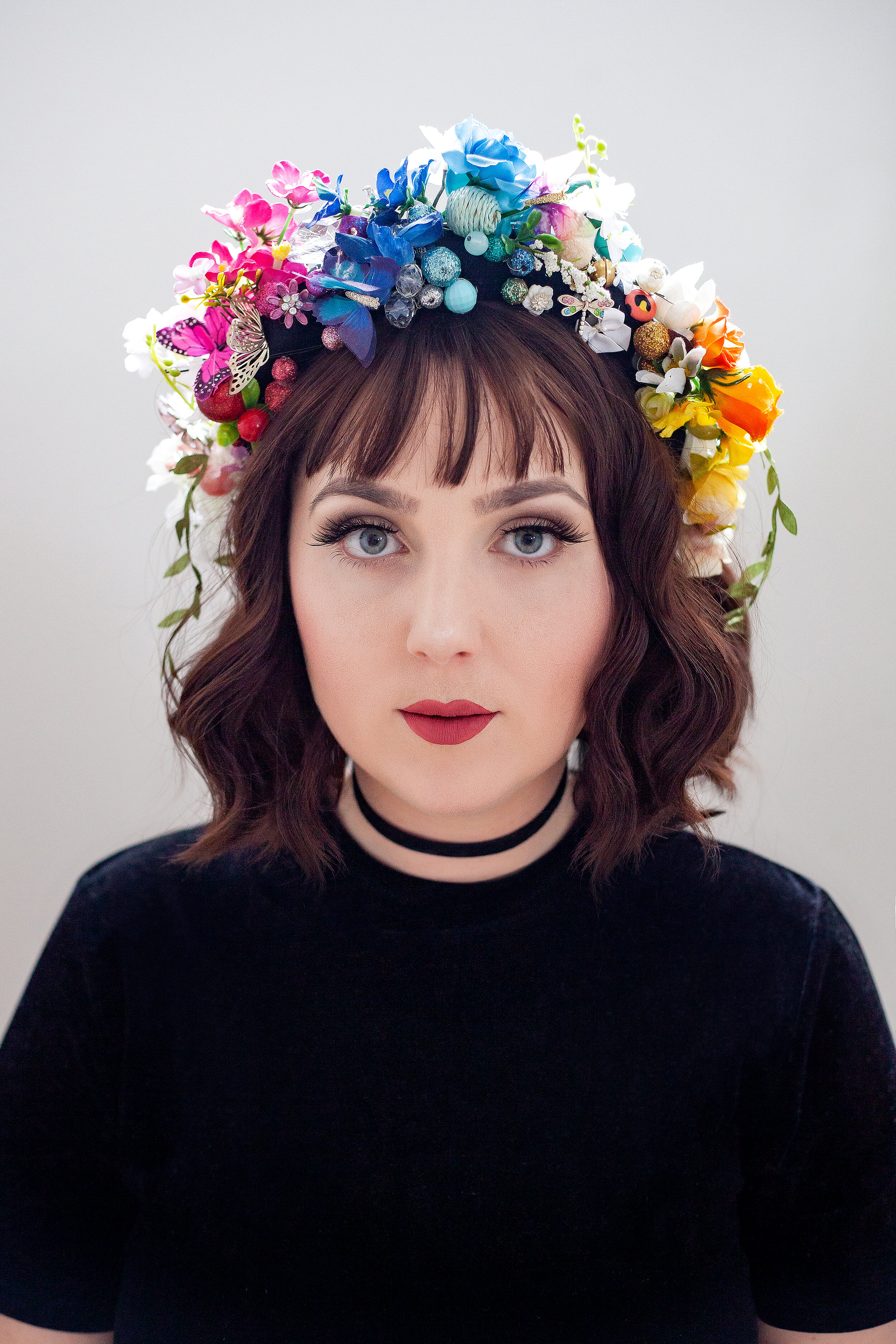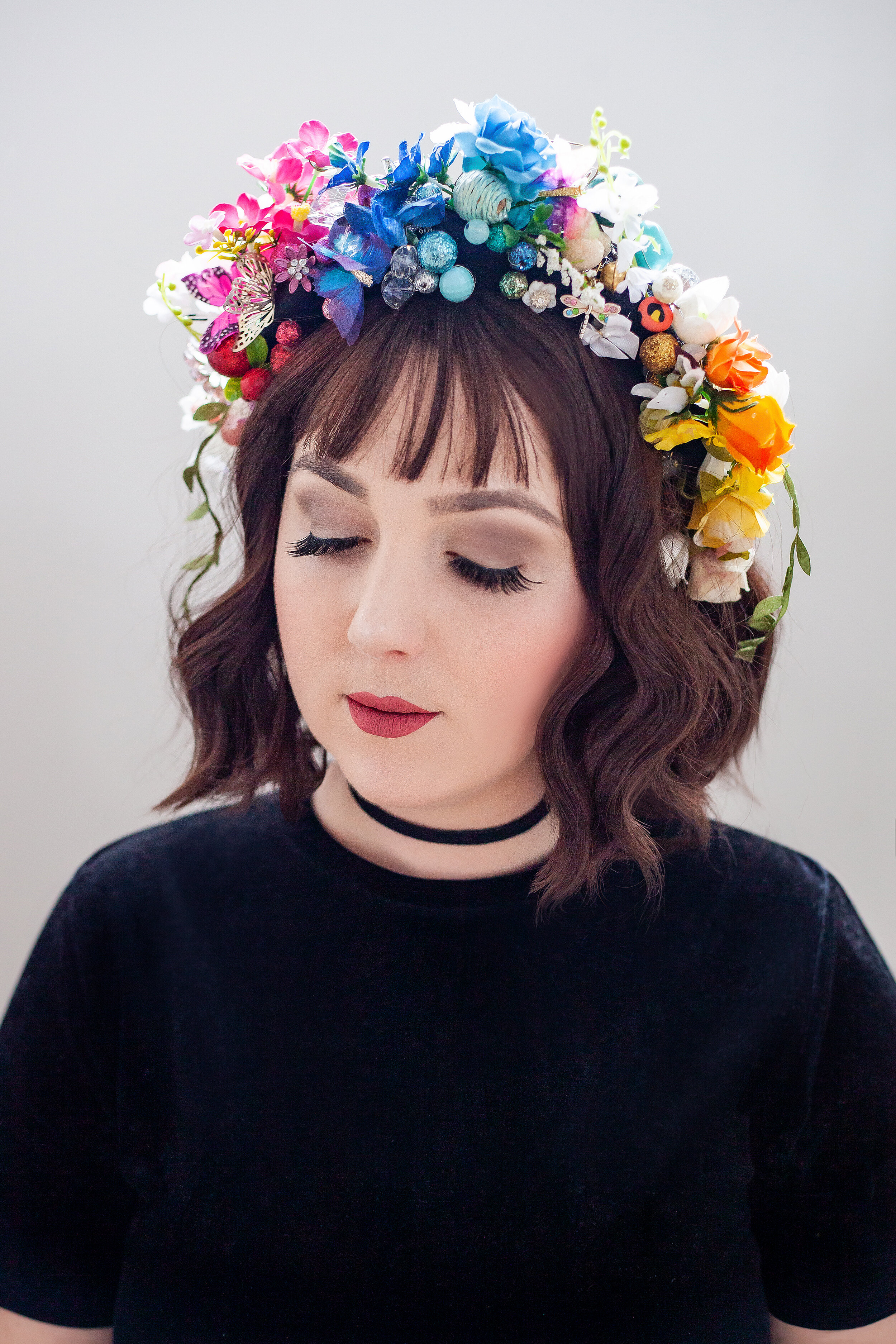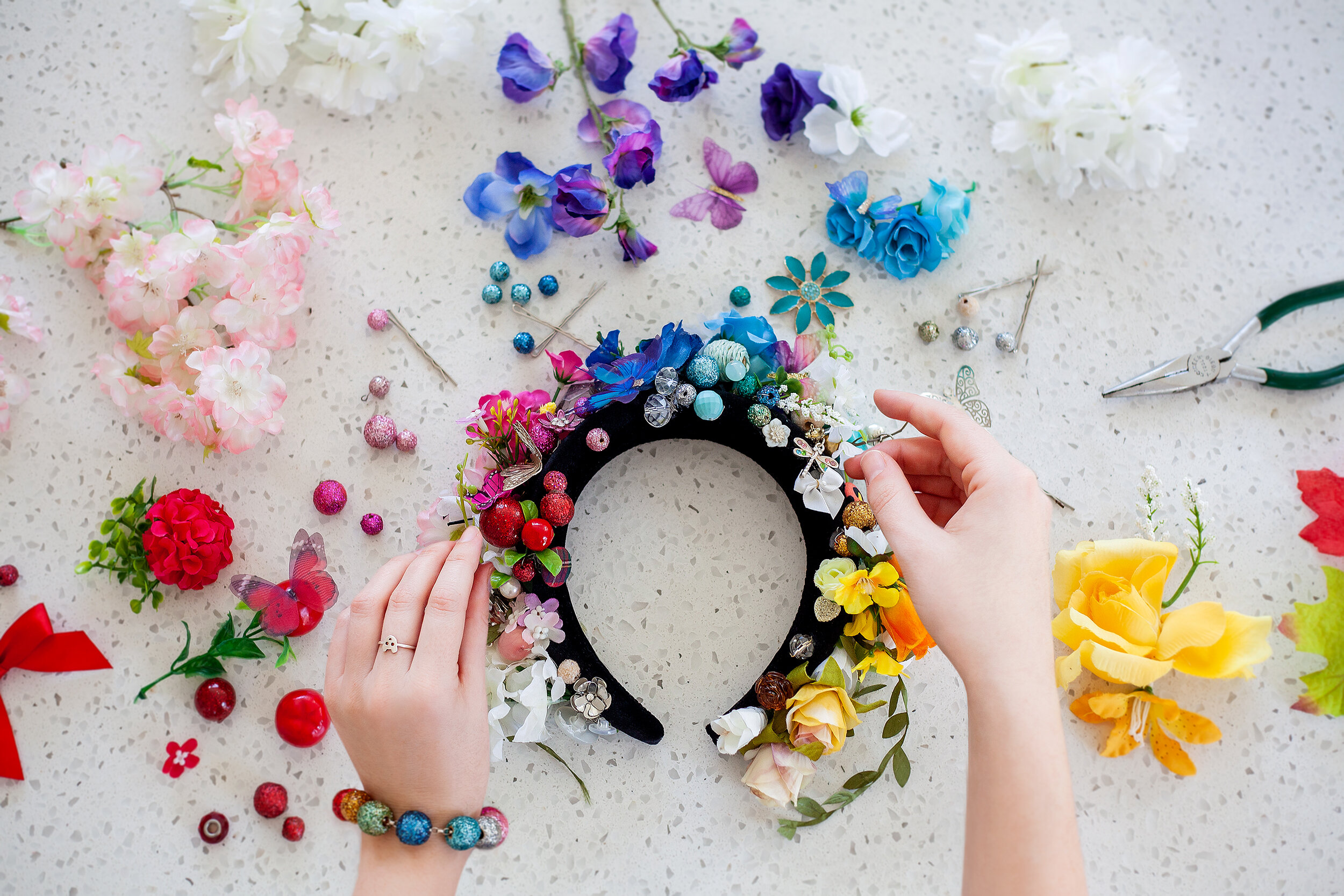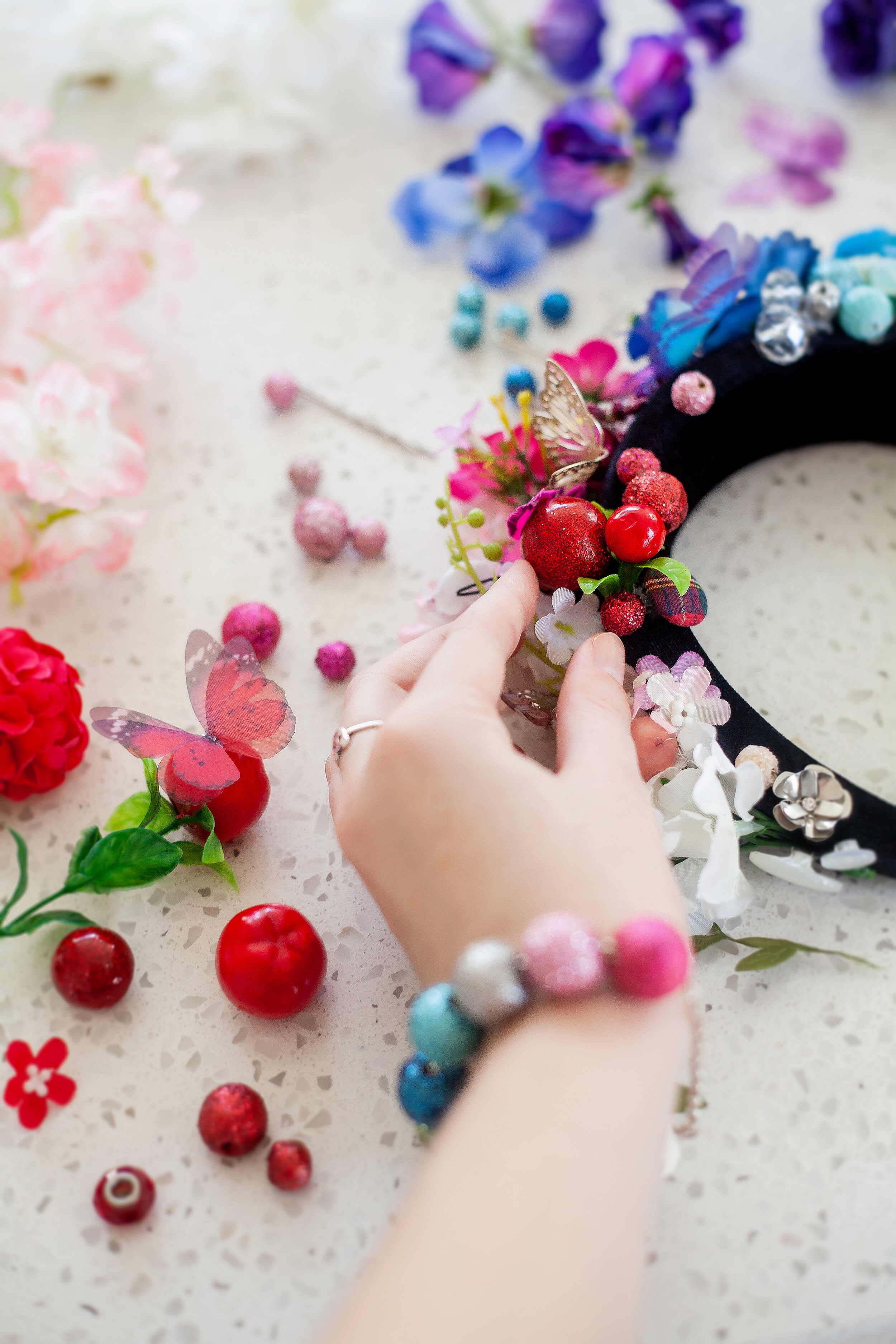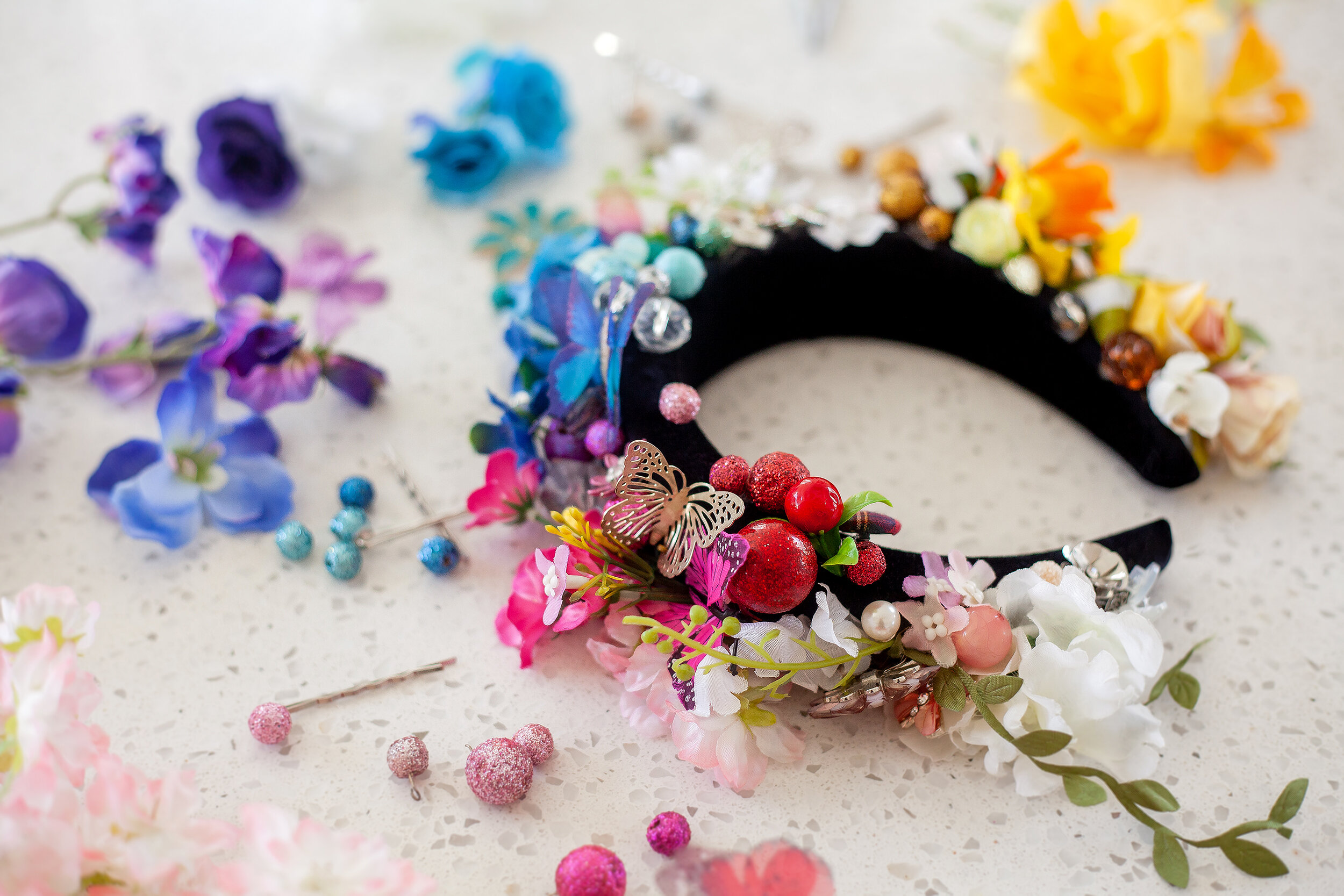DIY | A Guide to Creating

Create the reality for your dreams to live…
I have always enjoyed the creative process. Dream it, dwell on it, do it. There is almost nothing more satisfying in life than making something tangible with your own two hands, and bringing into reality what was once an untouchable dream. If you want to familiarise yourself with tips on how to be more creative, then take a look at this earlier article I wrote on The Creative Process. If you are struggling with creative block, harness your inner muse with Chasing Inspiration. In this article I share with you my guide to creating, the ultimate creative guide to ‘Do It Yourself’ otherwise known as D.I.Y!
“Creativity takes courage.”
DIY | A Guide To Creating
Above: The making of the ‘Harvest Garland’ headpiece for Katie Marvel.
This guide is a handbook for those who already have a vision in mind for their creations. If you are at the stage where you are still finding inspiration and generating ideas, see this article here which I wrote to help you help you overcome creative obstacles with Mistakes to Mastery.
A Guide to Creating | Part One: The Creative Factors
My creations will often feel like they have a mind of their own. It can seem like they come to life of their own volition, and I have been merely facilitating to help that process take place. This can be fantastic when it comes quickly and easily, but it can also be disheartening and frustrating when it doesn’t. Sometimes the physical execution of a concept can alter or change the outcome, either through the resources, process, or technique that is used. I always keep the potential of this in the back of my mind, because when I encounter problems these are the three key aspects I consider before deciding what to do next.
The Three Creative Factors:
Resources
The tangible materials you use will drastically altar the direction of a project. For example in this harvest garland I created, if I had created the flowers form another material such as clay, or wool, this would have completely changed the aesthetic and affected other factors too like strength, durability, and time. To use resources and materials to your advantage, consider thoughtfully what materials you will use in advance through research, practice imagining the finished result in your mind’s eye, play out as much as possible before committing to an idea, and brainstorm a variety of options throughout the process so you can flesh out each idea and be certain of an effective approach.
Process
The order of steps you use to create your next masterpiece may also affect the outcome of it’s success. For example, if I create a dress design and paint the fabric before I sew it, this will change the way the pattern or design sits on the dress compared to if gets painted after completing the sewing construction and pattern design. Neither is right or wrong, but I find it easiest to work out the best option for the project at hand in advance for each stage of your process. Don’t be afraid to experiment with your approach to find what best works for you.
Technique
There are many roads that lead to the final destination, and many ways to achieve the same goal especially creatively. Some techniques will require more time, money, or skill and it’s effective to accurately assess which of these you possess at a given time in order to bring out the full potential of your creation every time.
A Guide to Creating | Part Two: Maximising Success
Once you have completed all the steps leading up to the physical creation of your idea, to ensure your success there are a few tips I recommend for when you begin to do anything yourself:
Have a plan B. It’s really important to always have a second, or third option available to you in the back of your mind if something goes wrong. Create or find ways to easily try again, without jeopardising the work you’ve done. For example when I began to add the beading elements to my Katie Marvel Harvest Garland, I began using wire as a means to temporarily hold everything in place until I was certain I wanted to permanently fix them to the head piece. Having a plan B means you’ll be more confident to experiment as you move forward, and ultimately this will result in more creativity available to you!
Break it into small steps. ‘The man who moves a mountain begins by carrying away small stones.’ This quote by Confucius aptly describes how even the impossible can be achieved by breaking your goal into small steps. It can be extremely tempting to do everything all at once, but ultimately this will backfire on you and I have experienced this many times because I have undertaken too much at once. Be patient with yourself, your concepts and your process.
Research anything new or uncertain. This one is essential to success with any project! Just like learning to be self aware of your strengths and weaknesses to grow as a creative, it’s also important to be aware of gaps in your knowledge. Always invest a significant amount of time researching any aspects of your project that you are not familiar with or have not undertaken before, either through seeking help from someone more experienced, our friend Google, or ideally a combination of sources. The better you build a foundation for your project, the easier it will be to manifest it. Get inspired, get creative, and get started!
Like this post? Follow me on Instagram, Facebook, Twitch, and Pinterest! ♡
New Zealand Photographer & Creative. Love my images? Get in touch with me via The Undefined Photography ♥

